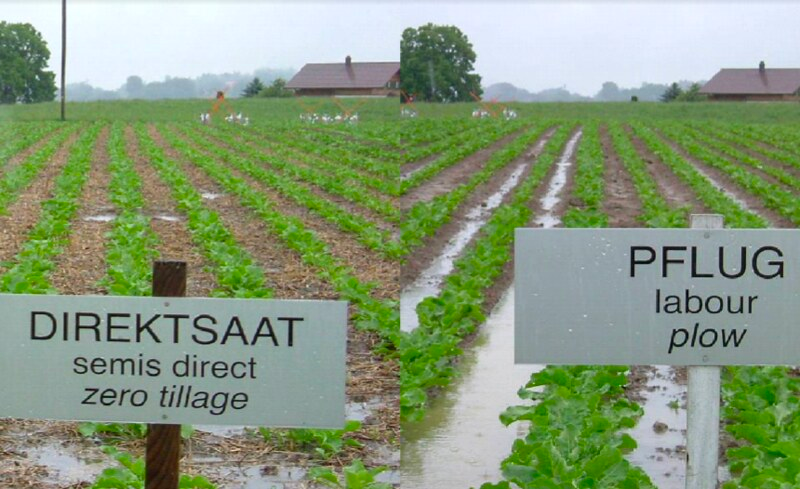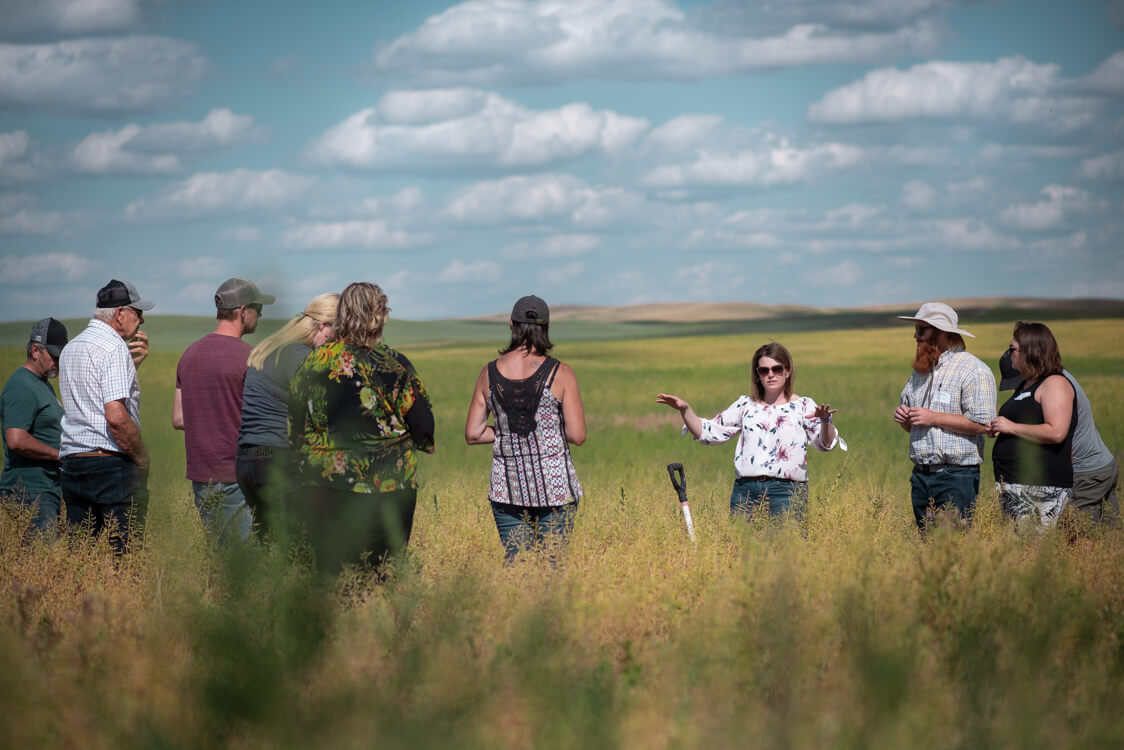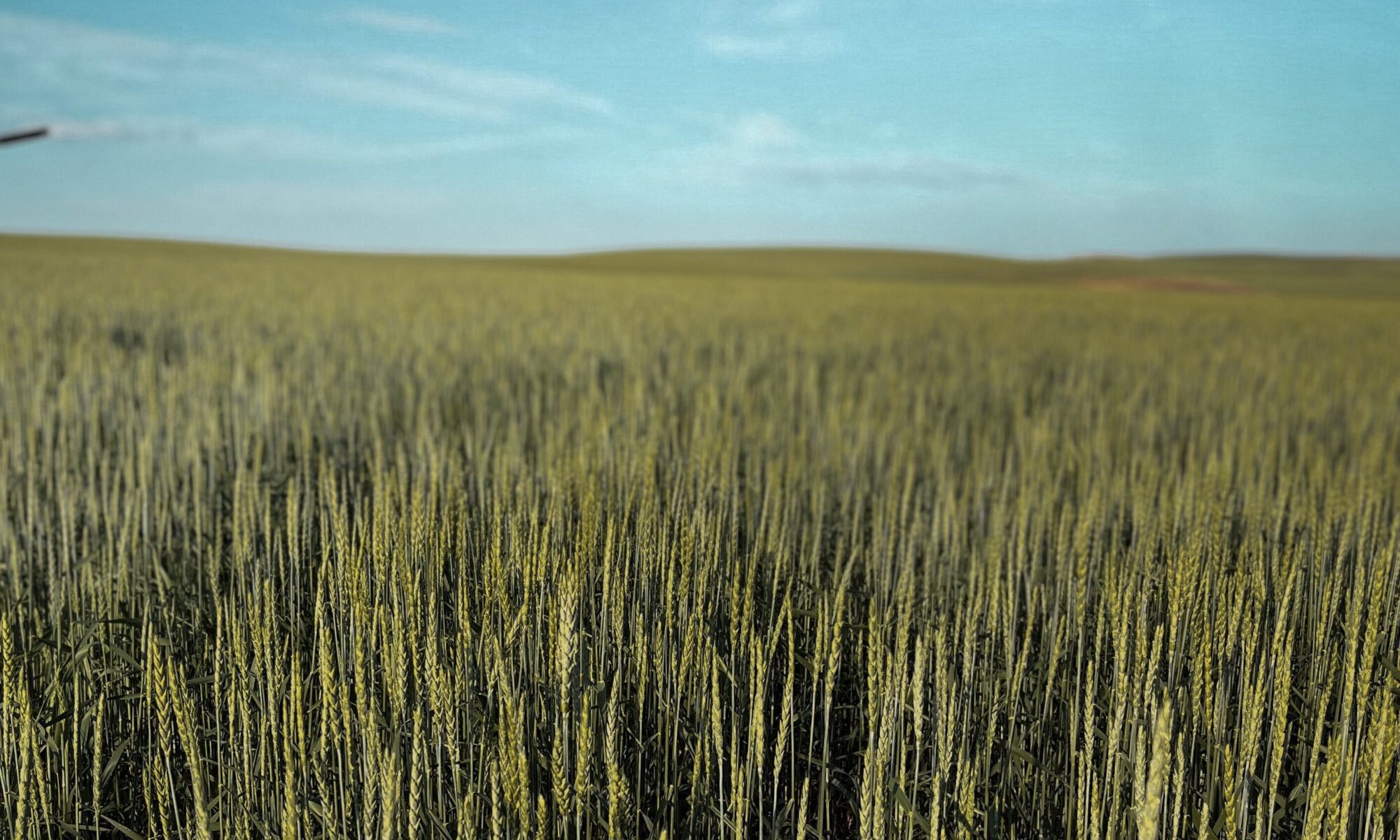Keeping the soil covered allows for favourable conditions for microorganisms to thrive. Covering soil also helps regulate soil temperature and protects against wind and water erosion. Cover crops are common soil covers, where non-commercial crops are planted to anchor valuable topsoil, fix nitrogen, build soil organic matter, and retain soil water.
Keeping soil covered is a vital principle of regenerative agriculture that promotes healthy soils and food systems. Blanketing fields year-round with groundcover shields the soil from erosion, retains moisture, insulates soil life, and fortifies the land’s natural defences against weather extremes. In natural ecosystems, exposed soil is quickly occupied by plants, fungi, and other organisms that help to protect and enrich it. In contrast, bare soil is vulnerable to erosion, weed pressure, and soil health degradation. It can also contribute to climate change.
In this article, we explore how innovative farmers like the Axtens in Saskatchewan maintain consistent soil cover despite arid conditions. Through techniques like cover cropping, no-till planting, and strategic crop selection, they protect their soils from exposure while demonstrating the timeless importance of this regenerative principle.
As climate change intensifies droughts, heatwaves, and severe weather events across the Prairies, covered soil becomes even more critical for strengthening resilience. By exploring these methods, we hope to inspire widespread adoption of soil-nurturing practices that regenerate land and food systems alike.
The importance of soil cover is evident at Axten Farms in Minton, Saskatchewan, a multi-generational grain farm in the southern part of the province operated by Derek and Tannis Axten—one of the featured farms of the Stories of Regeneration summer tour.
The Axtens’ motto, “Loyal to the Soil,” pays tribute to their unwavering commitment to soil improvement. Their crop diversity includes specialty grains like chickpeas, oats, flax, spelt, and red fife. Situated in a semi-arid environment where precipitation is typically the primary limiting factor for crop production, water conservation is a top priority for the Axtens. Derek emphasizes, “[Soil cover] is paramount for us because we think in terms of moisture conservation because of where we live.”

Why Keep Soil Covered?
Covered soil fosters a resilient ecosystem, providing the following vital ecological services:
● Erosion Control and Soil Protection
Soil covers act as a natural shield against wind and water erosion, safeguarding against the onslaught of heavy rains and wind. Organic armour, comprising cover crops, crop residues, and living roots, absorbs raindrop impact and stabilizes the soil, keeping it from blowing or washing away even in intense weather events.
● Moisture Retention
Covered ground retains more moisture through increased infiltration and reduced evaporation. Soil organic matter acts like a sponge, holding water in the root zone for plant use. This improved water-holding capacity promotes infiltration and reduces evaporation, ensuring that the soil remains a reliable reservoir of hydration and allows water to flow down rather than over the land. It’s worth mentioning that the small water cycle and local water tables also benefit from these mindful practices.
● Temperature Regulation
Ground covers like cover crops and green manures moderate the soil’s temperature. The cooling effect of the plants in summer helps retain moisture and maintains optimal conditions for plants and microorganisms alike to flourish. In winter, ground covers act like a cozy blanket, shielding the earth from the cold and wind.
● Weed Suppression
Crop residues, cover crops, green manures or mulches suppress weeds by blocking sunlight and reducing available space for weed seedlings to establish. This reduces the need for extensive weeding.
● Nurturing Soil Biology
The biology below ground thrives under continuous cover too. In fact, soil microbial activity and abundance increase by approximately 22% and 27%, respectively, in cover cropped soils compared to non-cover cropped soils. This surge in microbial activity translates to a superior capacity for nutrient cycling and more effective decomposition of plant residue.
● Adapting to Climate Change
As climate change brings with it increasingly unusual and extreme weather conditions, taking proactive measures is crucial. Expected higher temperatures, reduced soil moisture, and more frequent droughts in the Prairies pose significant challenges to our farmers. Soil covering practices like cover cropping have the potential to sequester up to 60 million tons of carbon from the atmosphere annually, representing a promising practice to help agriculture adapt to climate change. The Axtens’ farm, accustomed to limited precipitation, exemplifies proactive resilience through soil cover practices.

Soil Cover Practices at Axten Farms
The Axtens implement several soil covering practices, cultivating a thriving ecosystem that helps their crops stand up to challenging weather events, like the severe drought that the farm experienced this year.
● Cover Crops
Cover cropping involves planting non-harvested crops to improve soil health. In the semi-arid expanse of Saskatchewan, the Axtens implement cover crops whenever possible as a vital strategy to shield their soil. However, this practice comes with a moisture challenge in their environment. When cover crops are planted into soil with insufficient moisture, germination can be inhibited and biomass production before freeze-up is limited. This is the main reason that cover cropping remains a less popular practice in more arid environments.
According to Derek Axten, cover crops are a puzzle piece of paramount importance. “If there’s moisture, then we’ll seed covers,” he says. “When plants are growing in their vegetative state, that’s when the majority of the root exudates are happening. You only need three to four inches of aboveground growth.” These cover crops seed the soil with vital root exudates, feeding the soil microbiota.
Cover cropping is especially popular in central Canada, where soil moisture tends to be less limiting. Full-season cover crops, sown simultaneously with, or in place of, a cash crop, offer substantial biomass and are often grazed by livestock post-harvest. In contrast, shorter-duration or shoulder season cover crops, despite limited growth time, anchor the soil, enhancing its structure and vitality.
● No-till Farming
The Axtens embrace no-till farming to help maintain soil cover. Unlike tilled systems, which plow farmland before planting to combat weeds, break up the crust that forms on the soil surface in some cases, dry out fields more rapidly in wetter growing environments, and prepare a loose seedbed, no-till farming skips this step, causing minimal soil disruption. With more than half of Canadian farmed acres now prepared using no-till methods, the practice has grown in popularity in recent years. No-till farming can improve the structure of the soil in the long term, mitigate moisture loss, reduce greenhouse gas emissions, and reduce fuel and labour costs. Check out this video demonstrating the high runoff and soil erosion potential in continuously tilled systems compared to no-till systems.
● Low-Disturbance Planting
The Axtens use a low-disturbance planter, which fits in well with their no-till system and differs significantly from conventional deep furrow plowing. Instead of turning the soil, this planter employs gentle discs as a ground-opening mechanism, often likened to a pizza cutter, minimizing soil disruption and conserving moisture in the seedbed.
● Crop Selection
Strategic crop selection further reinforces the protective shield of soil cover. The Axtens opt for high-carbon crops, such as chickpeas and flax, which leave ample above-ground residues in the field, creating a mat which protects the soil against wind and water erosion.
Tannis says, “We [humans] feel rain and it feels nice. But if you think about the size of a raindrop on a teeny tiny microorganism, that’s a lot of impact! Whereas if you have some soil cover to absorb that impact, it’s not going to erode your soil the same.” That crop residue left behind by the flax and chickpeas is an effective means of mitigating this impact.

Join the Regenerative Movement
Bare soil is a fleeting state in nature, and as we learned throughout the blog, keeping our soils covered has profound implications. From moisture retention and stabilizing temperatures to preserving the soil’s delicate ecosystem, the advantages of this practice are undeniable. As Tannis aptly states, “Soil is a home for your biology, so of course you don’t want it exposed so it can be destroyed. You want to keep it covered.”
No matter how much land you are stewarding, there are ways to embrace soil-covering practices and contribute to the regeneration of our food systems. Home gardeners might consider sowing winter-kill cover crops, like oats, in their veggie garden in late summer, as well as using mulch. Large crop producers may invest in a stripper header combine to leave as much crop debris on the field as possible. Market gardeners may use a flail mower to shred crop residues and mulch their fields. Ranchers could explore rotational grazing. Another option is planting green manures, crops grown specifically to add organic matter and nutrients.
If you don’t have access to a farm or garden, we encourage you to visit a local farm or farmers’ market and ask questions, build relationships, and support farmers who implement practices that align with your values. We all have the power to inspire incremental changes in our food systems.
To know more about regenerative practices at Axten Farms, watch the recording of our webinar “Regenerating the Market” with Tannis Axten. Moreover, listen to the podcast episode and watch the short film interview with Tannis and Derek Axten.
Stay updated with our Principles of Regenerative Land Management blog series by subscribing to our newsletter and following our social media channels. We are delighted to have you on this journey with us!
If you have any questions or comments about the topics covered in this blog post, please contact our Education & Research Manager at: paige@regenerationcanada.org. If you have questions specific to the Stories of Regeneration campaign, please connect with our Campaign Manager at: alieska@regenerationcanada.org.




